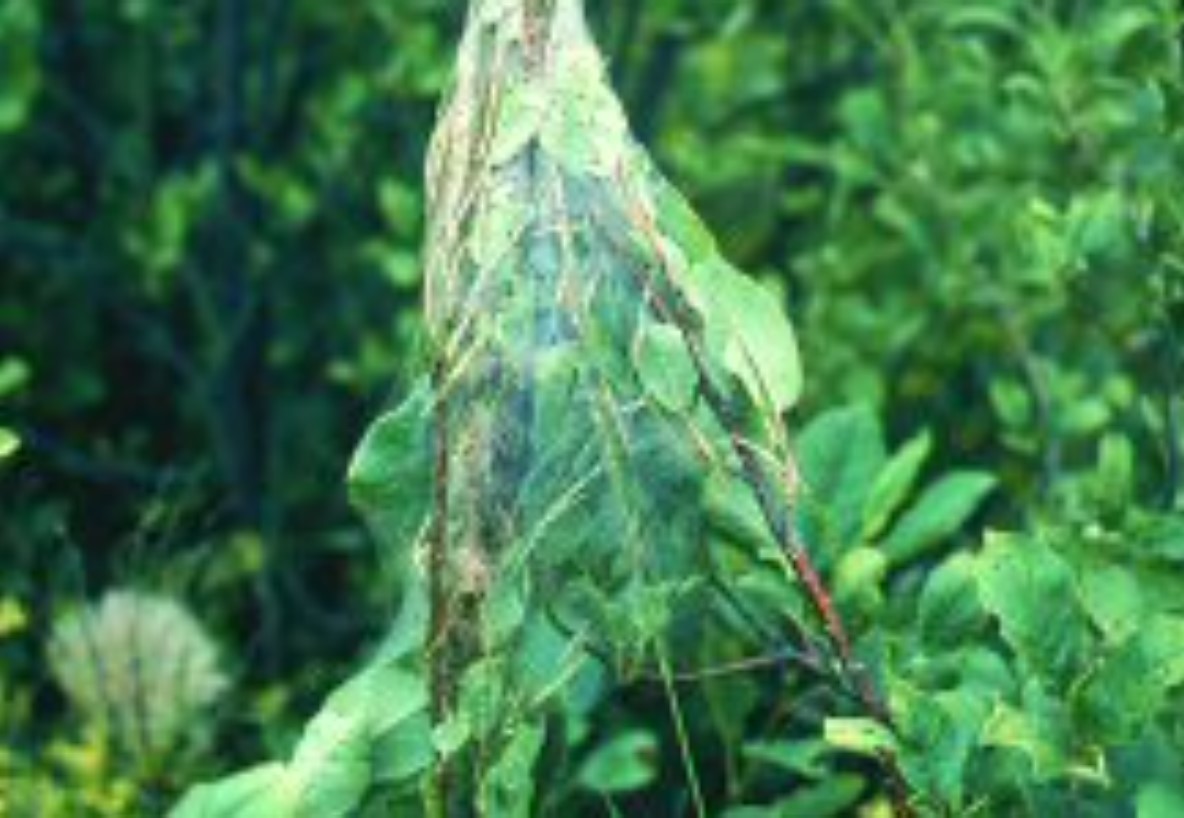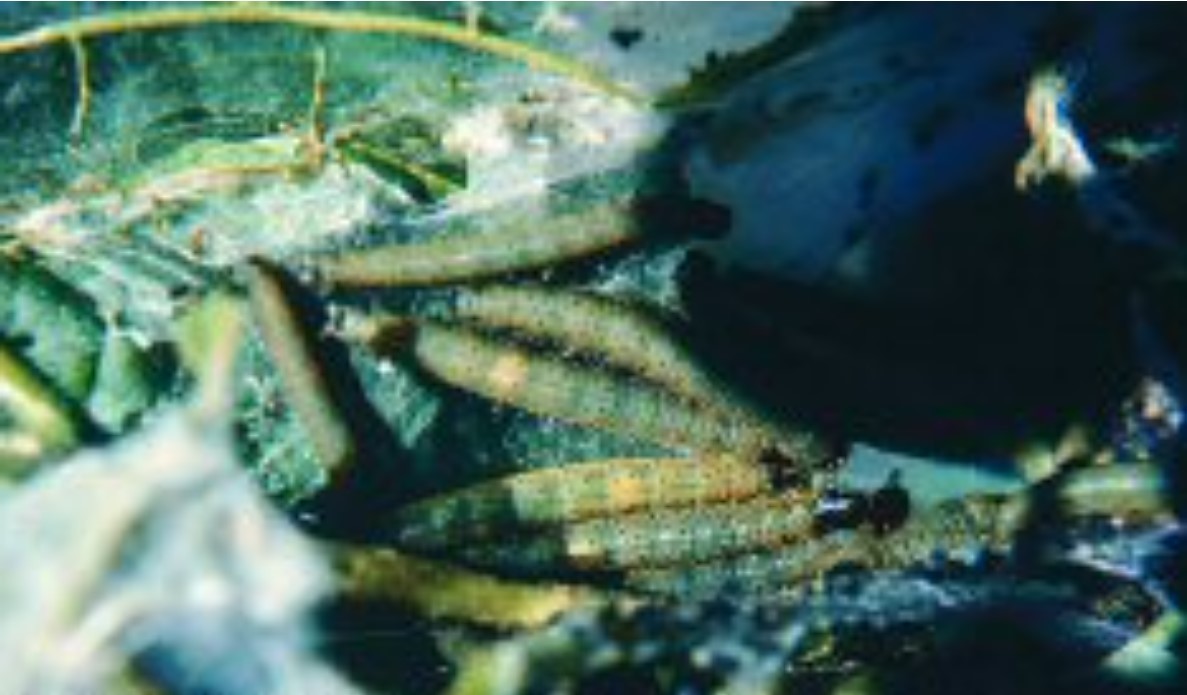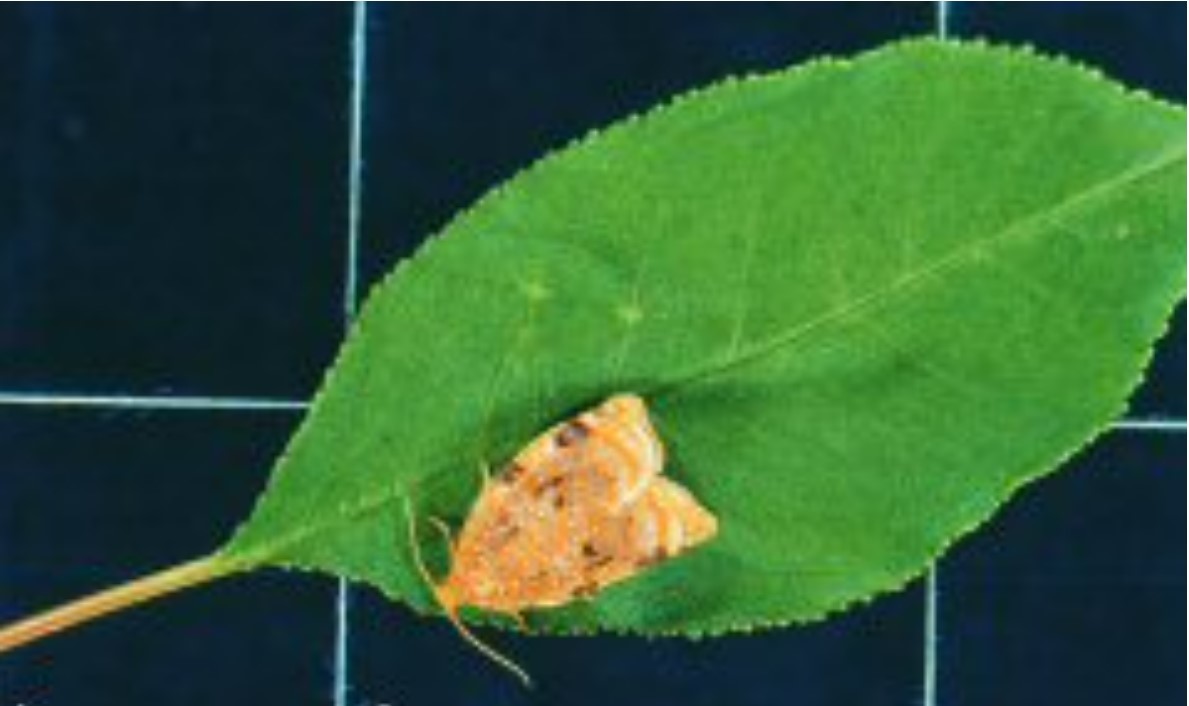The insect is named after its messy and nest-building behaviour. The larvae of this species hatch from overwintering eggs in the spring and can be found feeding from May to September. The larvae are typically yellowish to greenish-yellow in color, with black heads and thoracic shields. They reach a length of 20-23 mm when fully grown. The larvae pupate within the nest from mid-June to September, and the pupae move to the outer wall of the nest just before the adults emerge.
Adult ugly nest caterpillars are orange moths with a wingspan of 18-25 mm. The forewings are speckled and spotted with dark, reddish-brown markings, while the hind wings are a solid, bright orange color. The moths can be observed from early July to September, depending on the climatic region. Females deposit their overwintering egg masses on the stem near the base of host trees.
Ugly nest caterpillars have only one generation per year.
Sign and Symptoms
During the spring, ugly nest caterpillar larvae build a nest using leaves and branches, which they tie together with dense webbing. The larvae feed together within the nest and expand it as needed. The nest often contains excrement and bits of leaves, resulting in an unsightly mass. Although the damage caused by the ugly nest caterpillar has no lasting effect, the presence of the nests can reduce the aesthetic value of trees. In severe cases, entire shrubs may be covered with unsightly webbing.
Outbreaks of the ugly nest caterpillar are sporadic and can be absent for several years.
Prevention
Pruning
- In most cases, control can be achieved by cutting out and destroying the nests containing the larvae
Control - What you need an arborist to do
Pesticide
- Biological products is effective in controlling the pest.



Tree Health Issues
Wondering about costs?

